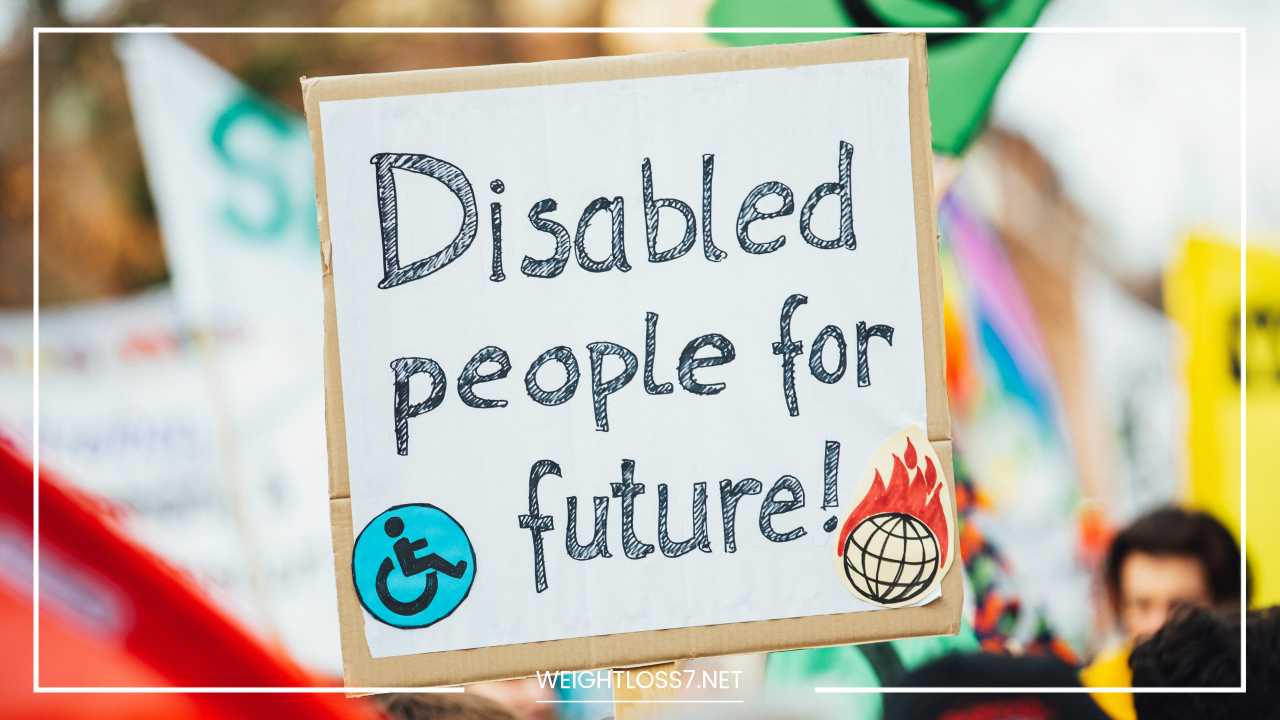How to Create Inclusive Healthcare for Disabled People

Disabled People
Thriving, Not Just Surviving: A Comprehensive Guide to Disabled People’s Health
People with disabilities are a vibrant and diverse population, estimated to make up roughly 15% of the global community. Yet, their health needs are often inadequately addressed or misunderstood.
This blog post aims to bridge that gap by providing a comprehensive guide to disabled people’s health.
We’ll delve into the unique health considerations for individuals with disabilities, shatter common myths, empower you to become your own healthcare advocate, and explore ways to create a more inclusive healthcare environment.
Understanding the Spectrum of Disability and Health Concerns:
The term “disability” encompasses a vast spectrum of experiences. It can include physical limitations, sensory impairments (vision or hearing loss), cognitive or intellectual challenges, chronic health conditions, and mental health diagnoses.
This diversity means that health concerns will vary greatly from person to person. However, some common threads emerge:
-
Increased Vulnerability to Secondary Conditions: Individuals with mobility limitations might face issues like pressure sores, urinary tract infections, or deep vein thrombosis due to limitations in movement. Those with visual impairments may have a higher risk of falls or injuries.
-
Pain Management: Chronic pain is a frequent companion for many disabilities, particularly those affecting muscles, nerves, or bones. It can significantly impact daily activities, sleep quality, and overall well-being.
-
Mental Health Considerations: Social isolation, depression, and anxiety are more prevalent among disabled populations due to various factors like limited access to social interaction, physical barriers, and societal stigma.
-
Navigating Healthcare Systems: Physical barriers in medical facilities, inaccessible transportation options, and insensitive communication from healthcare providers can make seeking medical help a frustrating and challenging experience for disabled individuals.
Dismantling the Myths Around Disability and Health:
There’s a pervasive misconception that disability automatically equates to poor health. This is simply untrue. People with disabilities can, and do, live long, fulfilling lives filled with vibrant experiences. Here are some common myths that need debunking:
-
Myth: Disability is a barrier to physical activity.
-
Reality: Adapted exercise programs exist for most disabilities, offering numerous health benefits. From water aerobics and specialized weight training to yoga modified for specific needs, there are options for everyone.
-
Myth: People with disabilities don’t need preventative healthcare.
-
Reality: Regular checkups, screenings, and vaccinations are crucial for everyone, regardless of disability. Early detection and preventive measures can significantly improve overall health outcomes.
-
Myth: Mental health struggles are a sign of weakness in the disabled community.
-
Reality: The pressures of living in an often-inaccessible world can understandably take a toll. Seeking support for mental health concerns is a sign of strength and self-care.
Empowering Yourself: Taking Charge of Your Health as a Disabled Person:
Here’s a step-by-step approach for disabled individuals to proactively manage their well-being:
-
Find a Disability-Competent Healthcare Provider: Look for doctors, nurses, and specialists familiar with the unique needs of the disabled community. Ask your existing healthcare network for recommendations or consult with disability rights organizations for a list of qualified providers in your area.
-
Become Your Own Health Advocate: Educate yourself about your specific disability, treatment options, and potential complications. Research credible resources and don’t hesitate to ask questions during appointments. The more informed you are, the better equipped you’ll be to make informed decisions about your health.
-
Build a Support System: Surround yourself with friends, family, and support groups who understand your challenges and can offer encouragement, practical assistance, and emotional support. Online communities for disabled individuals can also be a valuable source of connection and shared experiences.
-
Prioritize Mental Health: Don’t hesitate to seek therapy or counseling if needed. There’s no shame in seeking help to manage stress, anxiety, or depression. Many mental health professionals specialize in working with the disabled community and can offer tailored support.
-
Focus on Preventative Care: Schedule regular checkups with your doctor, manage chronic conditions diligently, and get recommended vaccinations. A proactive approach can help prevent complications and maintain optimal health.
-
Embrace Physical Activity: Find adapted exercises you enjoy, whether it’s using specialized gym equipment, joining a swimming program, or simply incorporating daily walks into your routine. Physical activity can improve muscle strength, cardiovascular health, and mood.
Building a More Inclusive Healthcare System:
Creating a healthcare environment that truly caters to the needs of disabled individuals is essential. Here are some key steps to achieve this:
-
Accessibility Matters: Ensure all healthcare facilities – from hospitals and clinics to doctor’s offices – are physically accessible. This includes ramps, elevators, accessible bathrooms, and designated parking spaces for disabled individuals. Additionally, consider features like wide doorways to accommodate wheelchairs or motorized scooters.
-
Communication Accessibility: Not all disabilities are physical. Healthcare facilities should prioritize accessible communication features to ensure everyone receives proper care. This includes having sign language interpreters readily available for deaf or hard-of-hearing patients, providing assistive listening devices for those with hearing impairments, and offering braille or large-print informational materials for visually impaired individuals.
-
Training for Healthcare Providers: Medical professionals need ongoing training in disability sensitivity and best practices for treating patients with diverse needs. This includes understanding accessibility considerations, effective communication techniques, and ensuring all patients feel welcome, respected, and listened to during consultations.
-
Representation Matters: The healthcare industry should strive for diversity in its workforce, including doctors, nurses, and administrative staff, to better reflect the population they serve. Additionally, ensuring healthcare resources and information are available in accessible formats, such as audio recordings, transcripts, or easy-to-read formats, caters to a wider range of patients. Consider including people with disabilities in the development and dissemination of health promotion campaigns to ensure the messaging resonates with the community.
Technology as a Bridge:
Technological advancements can play a significant role in bridging the gap in healthcare access for disabled individuals. Here are some examples:
-
Telehealth Services: The rise of telehealth appointments allows for virtual consultations with doctors, reducing the burden of traveling to medical facilities, which can be challenging for some disabled individuals.
-
Assistive Technologies: A range of assistive technologies can empower people with disabilities to manage their health more independently. This could include blood pressure monitors with voice prompts, glucose monitors with screen readers, or medication reminder apps that can be customized for specific needs.
-
Wearable Health Devices: Fitness trackers and smartwatches can be valuable tools for monitoring activity levels, sleep patterns, and heart rate, allowing disabled individuals to take a more active role in tracking their health data.
The Power of Community: Resources and Support
The disabled community thrives on connection and shared experiences. Here are some valuable resources for further support and information:
-
National Disability Rights Network (NDRN): https://www.ndrn.org/ – The NDRN is a leading voice for disability rights in the United States, advocating for policies that ensure equal access and opportunity for people with disabilities. Their website offers a wealth of resources and information.
-
The American Association of People with Disabilities (AAPD): https://www.aapd.com/ – The AAPD is another prominent organization fighting for disability rights on a national level. Their website provides information on various topics related to disability and health, including healthcare access and navigating the healthcare system.
-
The Mighty: https://themighty.com/ – This online platform is a powerful space for sharing stories, experiences, and resources within the disability community. It offers a platform for connection, support, and finding strength in shared experiences.
-
Disability.gov: https://www.ssa.gov/disability – This U.S. government website is a comprehensive resource for people with disabilities and their families. It provides information on a wide range of topics, including healthcare, employment, education, and benefits.
Remember:
Living a healthy and fulfilling life with a disability is absolutely possible. By understanding the specific challenges, debunking myths, taking charge of your well-being, advocating for a more inclusive healthcare system, and leveraging the power of technology and community, you can create a path to thriving, not just surviving.
Beyond the Individual: Advocating for Change
While individual action is crucial for managing your own health and well-being, systemic change is equally important to create a more inclusive and equitable healthcare landscape for all disabled people. Here are some ways you can advocate for change:
-
Raise Awareness: Talk openly about your experiences and the challenges you face in accessing healthcare. Share your story on social media, local support groups, or disability forums. Educate those around you about the importance of disability inclusion.
-
Support Disability Rights Organizations: Donate to organizations like the NDRN or AAPD who fight for disability rights and advocate for improved healthcare access. Volunteer your time or participate in their campaigns to amplify their message.
-
Contact Your Elected Officials: Write to your local representatives or policymakers expressing your concerns about the lack of accessibility in healthcare facilities and advocating for policies that promote inclusive healthcare practices.
-
Become an Accessibility Champion: If you work in the healthcare field, champion accessibility initiatives within your workplace. Push for physical and communication accessibility measures, disability sensitivity training for staff, and the inclusion of disabled voices in discussions about healthcare improvement.
-
Share Your Expertise: If you have lived experience with a specific disability and have developed strategies for managing your health, consider sharing your knowledge with others. You can write blog posts, create online tutorials, or even organize workshops for others in the disabled community.
Final Word: A Brighter Future for Disabled People’s Health
By combining individual action, community support, and systemic change, we can create a future where healthcare is truly accessible and inclusive for everyone, regardless of disability.
When disabled people have the tools, resources, and support they need to manage their health effectively, they can thrive in all aspects of life.
This blog post serves as a starting point for a crucial conversation. We encourage you to explore the resources provided, get involved in your community, and advocate for a healthcare system that empowers everyone to live a healthy and fulfilling life. Remember, a healthier future for disabled people is a healthier future for all.

















